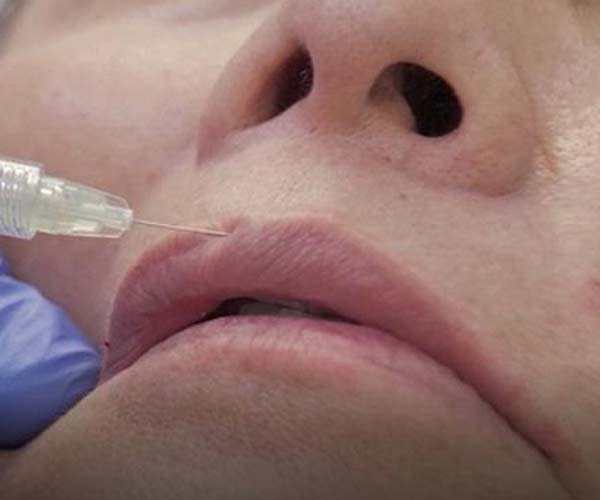Types of Lip Fillers
By Dr. Stephen Cosentino
PRESIDENT OF EMPIRE MEDICAL TRAINING
Guide to Lip Filler Types
The following sections cover:- Hyaluronic acid, the most common type of lip plumping filler
- Lip filler brand names, such as Restylane® and Juvederm®
- The outcomes, benefits, and possible downsides of lip filler treatments
- The possible side effects of lip fillers
- Alternatives to temporary lip fillers, including lip implants and grafts
Lip Filler Compounds and Brand Names: Outcomes, Benefits & Downsides
The most common compound used in temporary lip fillers is hyaluronic acid (HA). Fillers containing calcium hydroxylapatite are more commonly used in peri-lip wrinkles and naso-labial fold treatments but can be used in lip filler treatments. Hyaluronic acid occurs naturally in the body, reducing the risk of serious allergic reaction. Results may be visible immediately, allowing clinicians to adjust dosing and injection placement in real-time to achieve desired results, though certain brands of hyaluronic acid-based fillers can take several days to show results. In any case, the relative safety and ease of injection of hyaluronic acid lip fillers allows for incremental treatment spanning several office visits in a period of weeks. HA fillers produce natural-looking volume enhancement. Any post-treatment bumps or irregularities should dissolve on their own without further intervention. The most notable downside to HA fillers is their impermanence — results last no more than two years, and often not that long, even with follow-on touch-up treatments. Restylane and Juvederm are the best-known HA lip filler brands on the U.S. market. Both are formulated to durably but temporarily produce fuller, smoother lips.- Restylane®: Restylane Silk is approved by the FDA for lip augmentation procedures and other cosmetic indications around the mouth. Its gel is smoother than other Restylane variants, making it ideal for fine work in the lips and mouth, and contains the local anesthetic lidocaine. Its lip-enhancing effects generally last for 6 to 12 months, possibly longer for patients who receive in-office touch-ups at 6 to 9 months. The initial procedure should take no longer than one hour.
- Juvederm®: Two Juvederm products are FDA-approved for lip augmentation: Juvederm Ultra XC and Juvederm Volbella XC. Like Restylane Silk, both formulations contain lidocaine. Results are comparable in appearance and duration to Restylane Silk, with visible enhancements persisting for as long as 18 to 24 months with post-treatment touch-ups.
Filler Types and Possible Side Effects
Temporary lip or face filler injection is an outpatient procedure that does not require general anesthesia or internal surgery. It is widely regarded as a safe, effective cosmetic procedure. That said, no cosmetic procedure is completely without risk. All clinicians and patients should be aware of the possible side effects of face fillers and lip fillers. These effects can vary by filler type and tend to be mild and transient, lasting no more than three to four days:- Swelling or bruising around the injection site
- Redness or itching at or around the injection site
- Bleeding at the injection site
- Cold sores
- Lumpy, irregular, or asymmetric lips (developing after injection)
- Severe swelling or bruising that persists for longer than a week
- Infection accompanied by fever (requires prompt medical attention)
- Stiffening of the lip
- Scarring or chronic bleeding
- Severe swelling or extreme itching around the lips (requires prompt medical attention)


